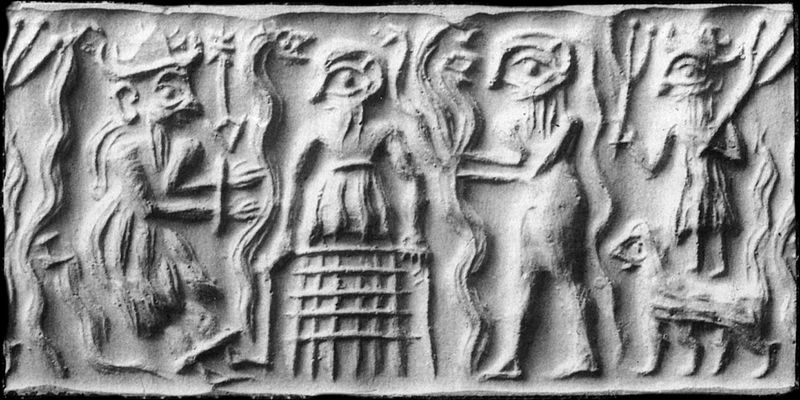For Christians, Easter is the most sacred day of the year. As the commemoration of the day Jesus rose from the dead, it celebrates our victory over sin and the grave and the new life we have in Him. Surprisingly enough, however, there is considerable controversy, even among some Christians, about whether Easter even qualifies as a Christian holiday, since it originated in a pagan spring celebration. Let’s look at this claim in more detail.
The Main Easter-Pagan Argument
A key part of the argument is that the word Easter comes from the name of a pagan goddess. This idea has a long history. The Venerable Bede (735 A.D.) first proposed it in his De Ratione Temporum (On the Reckoning of Time). He explains the origin of the month of “Eostur” (April) in this way:
Eosturmonath has a name which is now translated “Paschal month”, and which was once called after a goddess of theirs named Eostre, in whose honour feasts were celebrated in that month. Now they designate that Paschal season by her name, calling the joys of the new rite by the time-honoured name of the old observance.[efn_note]The Reckoning of Time, tr. Faith Wallis, Liverpool University Press 1988, pp. 53-54, as cited on https://www.tertullian.org/rpearse/bede_on_eostre.htm[/efn_note]
According to Bede, Eosturmonath (April) was once so named because of the goddess Eostre, the Anglo-Saxon goddess of Spring and fertility. Modern pagans have latched onto this idea and associate Eostre with Ostara, a Germanic goddess of Spring.
We are not sure where Bede got his information, but there are good reasons to doubt this explanation. For centuries, the church had been working to Christianize Europe, and this involved turning people from pagan practices, and especially from honoring pagan gods. It is therefore unlikely that they would have named the most important holiday in the church year after a pagan goddess. But even the existence of a goddess named Eostre is questionable, given that we have no other reference to her besides Bede in any other writings from the Anglo-Saxon period. Similarly, there is no reference to a Germanic goddess named Ostara in any surviving sources from that period.[efn_note]Relatively recent scholarship has tried to link Eostre to deities called the matronae Austriahenae. However, the relationship between Eostre and Austriahenae is overstated. As it stands, there are no pagan sources for the Anglo-Saxon goddess, Eostre, and we only find the name in the writings of Bede.[/efn_note]
There’s also a linguistic problem. Most of the world does not call Resurrection Day “Easter;” they use a word derived from the Hebrew pesach or Greek pascha, meaning Passover. If a goddess named Eostre was the source of the celebration, why is the name not more widespread?
Most of the world does not call Resurrection Day “Easter;” they use a word derived from the Hebrew pesach or Greek pascha, meaning Passover.
And why does a word like Easter appear only in English and German? Everywhere else, even in Germanic languages such as Dutch, Norwegian, or Swedish, the word is derived from pascha. Since Resurrection Day was celebrated long before the Anglo-Saxons or Germans were converted, and was known at that time as pascha, the origin of the holiday cannot be in Eostre.
It thus appears Bede was either following a popular myth in his day or just guessing. So where does the name Easter come from? Scholars now think it comes from a misunderstanding of a Latin name for Resurrection Day. In the early church, converts were required to go through a period of teaching before they could join the church. When they completed their instruction, they were baptized on Easter. The Sunday after Easter was thus known as Dominica in albis, or “Sunday after Easter” (the Octave, or eighth day of Easter) when the newly baptized took off their white baptismal robes.
It seems albis was misunderstood to be the plural of alba, or dawn, which was then translated into Old High German as eostarum. This then turned into both the English Easter and the German Ostern. Thus, the name Easter stems from a misunderstanding of the Latin used to designate the day of the year (Resurrection Day) when new converts completed their instruction and were baptized.
Easter Eggs and Rabbits?
Even without the Eostre connection, many people logically assume that our Easter traditions involving decorated eggs and rabbits are ancient fertility symbols with roots in paganism. Some modern pagans even claim without evidence that worship of Ostara involved these very things. As it turns out, however, the timing of the connection between Easter and eggs or rabbits shows that they do not derive from ancient paganism.

Red Paschal egg with cross, ΙΣΧΣΝΙΚΑ-888, CC BY-SA 3.0, via Wikimedia Commons
Decorated eggs have a far more mundane source than fertility rituals. During the Holy Week fast preceding Easter, Christians were prohibited from eating eggs. The chickens kept laying, however, and the eggs laid during Holy Week were considered Holy Eggs. Since they were considered holy, people began decorating them in the thirteenth century, many centuries after Europe turned from paganism. The egg itself was seen as a fitting symbol of the resurrection, with Christ bursting from the tomb in the same way the chick broke free from the egg.
As for rabbits, the timing of their association with Easter also eliminates any possibility that they are a holdover from pagan ideas. During the Middle Ages, rabbits were seen as innocent, good, and harmless, and as such were sometimes used as a symbol of Christ. But only in the seventeenth century did they become associated with Easter. German Lutherans created the Easter Hare, who determined whether children were good or bad at the beginning of the Easter season. The Hare eventually morphed into the Easter Bunny that distributed eggs at Easter. Even then, the Easter Bunny did not come into widespread use until the 1800s. So once again, the timing eliminates the possibility that the rabbit’s connection with Easter was a holdover from pagan fertility symbols.
Another Easter-Pagan Myth
Another version of the idea that Easter has roots in paganism comes from the ancient Sumerian myth of Tammuz and Ishtar (also known as Inana or Astarte) because of its supposed connection to the idea of resurrection, with some people going so far as to argue that the word Easter derives from Ishtar. An examination of the myth, however, shows that it bears little resemblance to Jesus’ resurrection.
Tammuz, the god of herdsmen, was the consort of Ishtar, the goddess of fertility. One day, Ishtar decided to go to the underworld where her sister ruled. Even after being warned off, she insisted on going through the seven gates of the underworld, at each one leaving an item of clothing or an ornament so when she arrived at the throne room, she was defenseless. When she sat on the throne, the judges of the underworld declared her guilty and as punishment put her to death. Since she was the goddess of fertility, all germination and sexual activity stopped on earth. The gods got her released on condition that she find a soul to take her place. When she returned home, she found Tammuz sitting on her throne. Furious, she named him the soul that would take her place. After she calmed down, she made a deal with Tammuz’s sister, who would take Tammuz’s place for a certain number of days per year.

Cylinder seal impression of Tammuz (alternatively known as Dumuzi) imprisoned in the underworld, surrounded by two snakes. Unknown author, Public domain, via Wikimedia Commons
A variant of the story based on a misunderstanding of early archaeological discoveries has Tammuz dying first. After three days Ishtar goes looking for him. She cuts a deal where they spend six months together in the underworld (winter) and then are released for six months (spring). This version of the story is inspired by the Greek legend of Persephone but is not actually supported by the more complete texts from the ancient Near East we now have available.
Aside from Ishtar’s return from the underworld, the story bears no resemblance to Jesus’ resurrection. Even on a superficial level, the differences are obvious: Jesus was a carpenter and not associated with either herding or fertility; there is no consort in Jesus’ story; the resurrection occurred in time and space and thus was not responsible for the arrival of spring; Jesus spent three days in the tomb, not six months; and most crucially, the resurrection was a one-time event, not part of a constant cycle of death and rebirth. Thus, seeing any version of this myth as a prototype of the resurrection is a stretch.
A Welcomed Easter Connection
On the other hand, although Tammuz and Ishtar are not the source of the celebration of Jesus’ resurrection, they may indirectly be connected to it. C. S. Lewis comments about God’s response to humanity’s need:
And what did God do? … He sent the human race what I call good dreams: I mean those queer stories scattered all through the heathen religions about a god who dies and comes to life again and, by his death, has somehow given new life to men.[efn_note]C.S. Lewis, Mere Christianity, (New York: HarperCollins, 2001), 50.[/efn_note]
Lewis believed these myths were hints God gave to the pagan world of what He would do in Christ. He didn’t mean by this that they were revelations from God at the level of the Old Testament, but that these myths arose in response to God’s general revelation—the cycle of death and life observed in the seasons. Because of this connection, such myths unwittingly hinted at Christ’s resurrection, albeit in a partial and confused manner. To put it differently, if Lewis is right, the argument that this and other myths were the source of the story of the resurrection has it exactly backwards: the resurrection was the reality that these myths were pointing to.
Jesus’ death and resurrection was the climactic point in history. Through it, we are redeemed and given a whole new kind of life that will last into eternity. Even the Creation itself will experience its own resurrection in the New Heavens and New Earth—and Jesus’ resurrection is the first fruits of that as well. The story of the resurrection and its celebration are thus not warmed-over paganism, but rather the hinge of history and the fulfillment of all the longings of humanity.
And that is something we should celebrate with full joy and gladness.
Like what you read? Watch Glenn speak on this topic on the Theology Pugcast.
Additional Easter resources from Reflections Ministries:
- Eternal Perspectives at Easter (Free E-Book)
- The Resurrection—Pillar of Christianity (article series)
- The Seven Last Words of Christ
- Easter Past, Present, and Future (collection of Bible verses)



